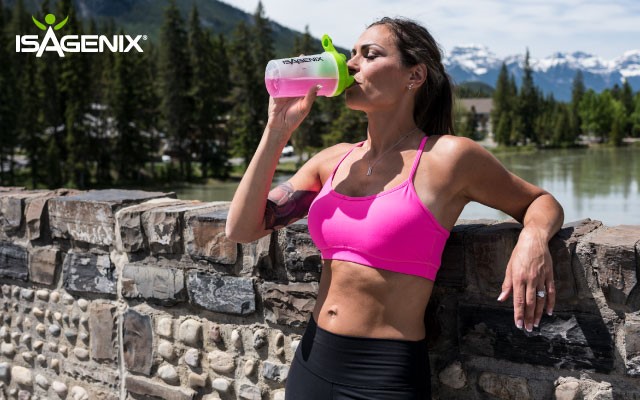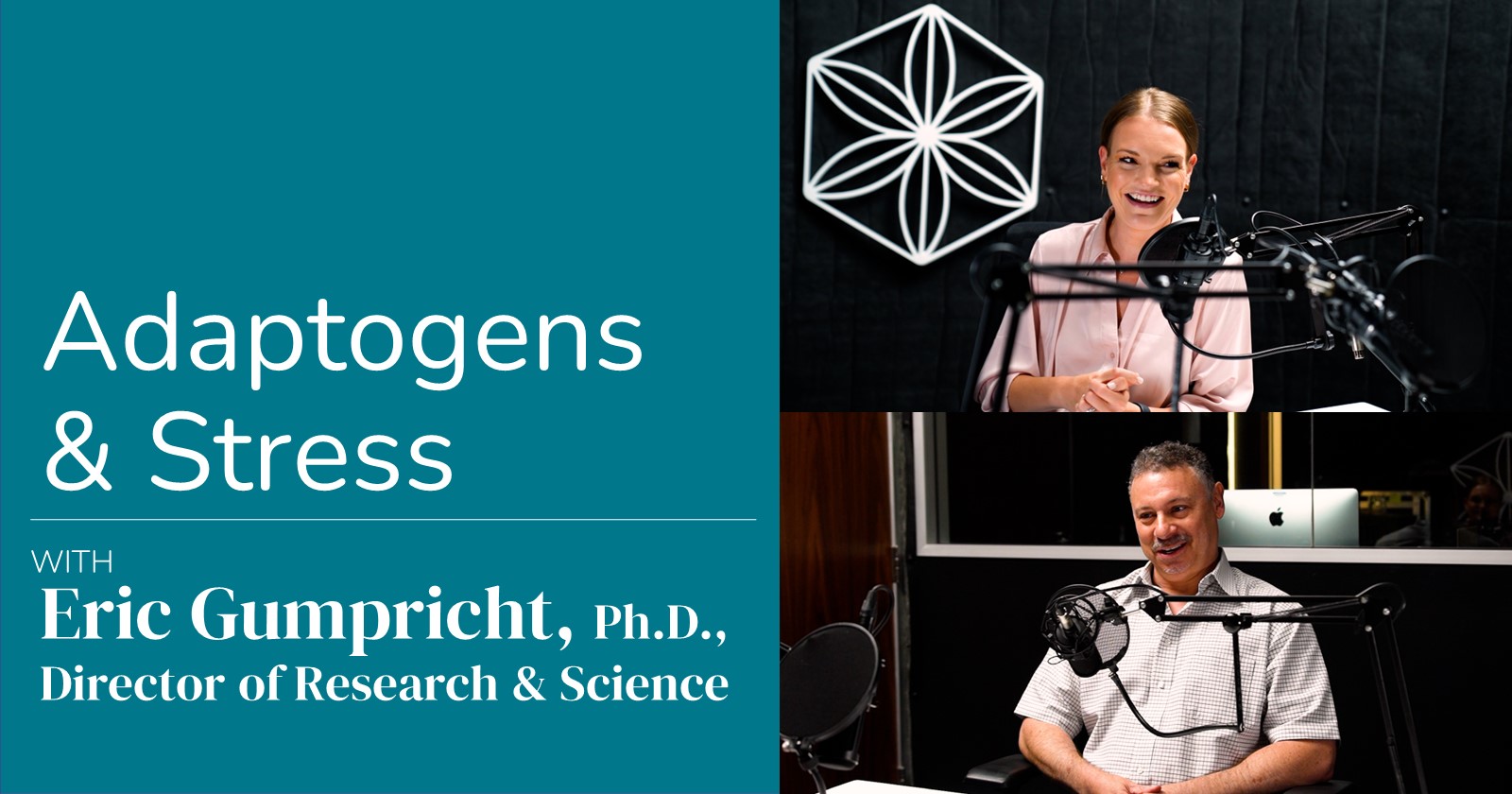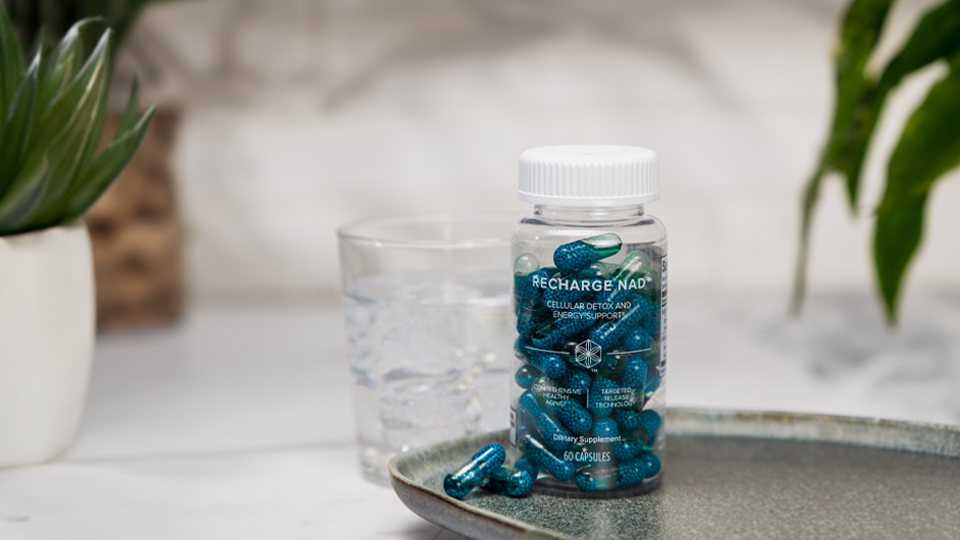Which Preworkout Supplement Should You Use?
With the recent launch of AMPED™ Nitro, the most frequent questions are, 1) how it compares to AMPED Power and, 2) whether you should choose it over AMPED Power. As it turns out, the two preworkout products do have differences, and the right choice for you can depend on your needs.
When to Use AMPED Nitro
AMPED Nitro is designed with evidence-based dosages of the following ingredients: Nitrosigine, beta-alanine, betaine, taurine, and naturally sourced caffeine from tea leaves. These ingredients have been reported to significantly improve performance levels in athletes or exercised individuals (1-4).
Caffeine, a mild nervous system stimulant, has been shown to enhance performance for endurance sports by increasing time to exhaustion, delaying perceptions of fatigue and decreasing perceptions of pain and effort. Also, research suggests that during exercise, caffeine acts to decrease reliance on glycogen use (10).
Both AMPED Nitro and Power do share some similarities including citrulline, creatine, and the patented ingredient Nitrosigine® arginine silicate. However, AMPED Nitro contains Nitrosigine® at three times the level that is found in AMPED Power with the intent of delivering a potent dose scientifically demonstrated to significantly increase blood flow to muscles (5, 6).
Taken approximately 15-30 minutes before exercise, AMPED Nitro ingredients have been individually shown to improve measures of physical performance such as increases in power, lean body mass and alertness, while reducing fatigue (7-9).
When to Use AMPED Power
While many may gravitate toward AMPED Nitro, there are still several scenarios of when AMPED Power might be the better option.
1. Many athletes may prefer to forgo caffeine before training at certain times such as before bedtime. The clearance of caffeine in the bloodstream occurs between three and six hours, and may extend even longer in certain individuals (10). Additionally, for some, caffeine consumption before exercise can interrupt sleep patterns, especially when working out prior to going to bed.
While caffeine is backed by numerous studies for its effects on improving performance and delaying fatigue, it’s understood that some athletes may choose to avoid AMPED Nitro because of a current controversy over a possible negative influence of caffeine on creatine uptake (10-12). Note that the studies recording an interaction of the ingredients taken together have largely involved high caffeine intake and creatine loading that may have resulted in gastrointestinal absorption issues (12).
The evidence isn’t quite settled on this issue yet. In fact, one recently published study suggests there may be a synergistic effect between caffeine and creatine (13). Regardless, some athletes who wish to focus on creatine intake may choose to take their caffeine separate such as in the form of e+™.
2. Certain athletes may not be interested in the buffering effect of beta-alanine during high-intensity exercise. Beta-alanine supplementation increases the concentration of muscle carnosine, which acts as an intracellular buffer allowing for improved performance during high- intensity exercise lasting one to four minutes, when lactic acid is highest (14).
However, beta-alanine may also induce paraesthesia, a slight tingling or itching in the skin (15). The itching doesn’t affect everyone and is generally not an issue at low doses such as those found in AMPED Nitro. However, for some, it can be bothersome although it’s harmless and usually disappears within 60-90 minutes after supplementation (14).
3. Some may choose to consume creatine daily as a supplement for reasons beyond performance improvement (16). In fact, exercise scientists and elite athletes alike agree that creatine is important even on rest days. Taking AMPED Nitro on training days and AMPED Power on rest days makes for an excellent approach to keep muscle creatine stores replenished.
When to Use e+ and AMPED NOx
Another consideration is how e+ might be used during the preworkout period. While some may be concerned over the level of caffeine by taking both AMPED Nitro and e+, the combined amount is still under the average consumption of caffeine (211 mg) in the United States (17). Certainly, e+ can be used with non-caffeinated AMPED Power too.
Moreover, a comprehensive review of the effects of caffeine consumption on human health concluded that for the healthy adult population, moderate chronic intakes of caffeine up to 400 mg a day are not associated with adverse effects (18).
Additionally, both products can be used with AMPED NOx. AMPED NOx works differently than Nitrosigine® to support nitric oxide production through its content of nitrates. Those nitrates come from natural sources such as beets, celery, and spinach.
Make Your Preworkout Supplement Work for You
In summary, it’s fine to use either AMPED Nitro or AMPED Power before training. One isn’t necessarily better than the other. It depends on your goals; each has a time and a place. The good news is you have the convenience of having both available for workouts. Both can also be used with e+ or AMPED NOx. It’s up to you to decide what works best for your regimen.
Nitrosigine is a registered trademark of Nutrition 21, LLC and is patent protected.
References
- Saunders B, De Salles Painelli V, De Oliveira LF et al. Twenty-four Weeks of β-Alanine Supplementation on Carnosine Content, Related Genes, and Exercise. Med Sci Sports Exerc. 2017 May;49(5):896-906.
- Trepanowski JF, Farney TM, McCarthy CG et al. The effects of chronic betaine supplementation on exercise performance, skeletal muscle oxygen saturation, and associated biochemical parameters in resistance trained men. J Strength Cond Res. 25(12): 3461-3471, 2011
- Astorino TA, Roberson DW. Efficacy of acute caffeine ingestion for short-term high-intensity exercise performance: a systematic review. J Strength Cond Res. 2010 Jan;24(1):257-65.
- Ra SG, Akazawa N, Choi Y et al. Taurine supplementation reduces eccentric exercise-induced delayed onset muscle soreness in young men. Adv Exp Med Biol. 2015; 803:765-72.
- Kalman D, Harvey PD, Perez Ojalvo S. Randomized Prospective Double-Blind Studies to Evaluate the Cognitive Effects of Inositol-Stabilized Arginine Silicate in Healthy Physically Active Adults. Nutrients. 2016 Nov 18;8(11). pii: E736.
- Rood-Ojalvo S, Sandler D, Veledar E et al. The benefits of inositol-stabilized arginine silicate as a workout ingredient. Int. Soc. Sports Nutr. 2015 Sep 12; P14.
- Martinez N, Campbell B, Franek M et al. The effect of acute pre-workout supplementation on power and strength performance. J Int Soc Sports Nutr. 2016 Jul 16; 13:29.
- Jagim AR, Jones MT, Wright GA et al. The acute effects of multi-ingredient pre-workout ingestion on strength performance, lower body power, and anaerobic capacity. J Int Soc Sports Nutr. 2016 Mar 8; 13:11.
- Smith AE, Fukuda DH, Kendall KL et al. The effects of a pre-workout supplement containing caffeine, creatine, and amino acids during three weeks of high-intensity exercise on aerobic and anaerobic performance. J Int Soc Sports Nutr. 2010 Feb 15; 7:10.
- Goldstein ER, Ziegenfuss T, Kalman D et al. International society of sports nutrition position stand: caffeine and performance. J Int Soc Sports Nutr. 2010 Jan 27;7(1):5.
- Vanakoski J, Kosunen V, Meririnne E et al. Creatine and caffeine in anaerobic and aerobic exercise: effects on physical performance and pharmacokinetic considerations. Int J Clin Pharmacol Ther. 1998 May;36(5):258-62.
- Trexler ET, Smith-Ryan AE. Creatine and Caffeine: Considerations for Concurrent Supplementation. Int J Sport Nutr Exerc Metab. 2015 Dec;25(6):607-23.
- Jerônimo DP, Germano MD, Fiorante FB et al. Caffeine Potentiates the Ergogenic Effects of Creatine. 2017;20(6):66-77.
- Hobson RM, Saunders B, Ball G et al. Effects of β-alanine supplementation on exercise performance: a meta-analysis. Amino Acids. 2012 Jul;43(1):25-37.
- Naderi A, de Oliveira EP, Ziegenfuss TN et al. Timing, Optimal Dose and Intake Duration of Dietary Supplements with Evidence-Based Use in Sports Nutrition. J Exerc Nutrition Biochem. 2016 Dec 31;20(4):1-12.
- Kreider RB, Kalman DS, Antonio J et al. International Society of Sports Nutrition position stand: safety and efficacy of creatine supplementation in exercise, sport, and medicine. J Int Soc Sports Nutr. 2017 Jun 13; 14:18.
- Fulgoni VL, Keast DR, Lieberman HR. Trends in intake and sources of caffeine in the diets of US adults: 2001-2010. Am J Clin Nutr. 2015 May;101(5):1081-7.
- Health Canada. Caffeine in food [Internet]. [updated 2012 Feb 16; cited 2018 Jan 3]. Ottawa (Canada); Health Canada; 2012. Available from: http://www.hc-sc.gc.ca/fn-an/securit/addit/caf/food-caf-aliments-eng.php.





